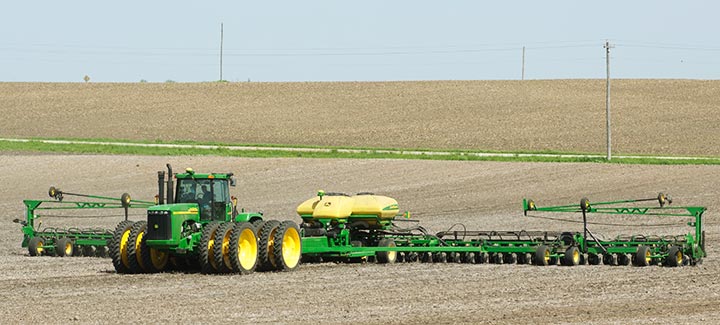
As corn planting gets underway, growers should stick with their normal hybrid maturities rather than switch to earlier-season maturities. Frequent, excessive rainfall can delay planting, but growers should be patient and hold steady.
A shortened growing season does not necessarily translate to needing a lower maturity rating. Research shows that late-planted corn matures in fewer calendar days than early-planted corn of the same hybrid. The timing of corn growth and development is mainly controlled by temperature. Corn needs to accumulate a minimum number of "thermal units" across the growing season to reach physiological maturity.
However, there is a big difference between the effective thermal units in a typical late-April day than in a typical late-May day. Later-planted corn develops in a different thermal environment than its relative maturity was designed for.
In a study published in 2002, researchers in Illinois, Indiana and Ohio planted corn on three dates between late April and June. The later-planted corn, both short- and long-season hybrids, matured an average of nine days before earlier-planted corn.
As more and more Stine HP corn hybrids are planted in our Illinois fields and with Stine’s planter program in full swing, I would caution growers who plant in narrow rows at higher populations that for every week you are delayed from planting these hybrids at the optimal time, you should back population off by 1,000 seeds per acre. This applies to corn in 30-inch rows as well when farmers are pushing populations. Rather than adjusting maturity, adjust population.
At the beginning of June, yields begin to drop by 20 percent, and by mid-June they drop by 40 percent. When corn planting is delayed past mid-June, corn growers may want to consider other crops, but until then, stick with plans to plant corn. As of yet, yield potential hasn’t been delayed and plenty of opportunity remains for a good growing season.
Related Articles
-

Start strong with Stine®: Maximizing your 2026 potential
January 2026 in Agronomy
-

Stine® to offer Syngenta’s Victrato® soybean seed treatment in 2026
December 2025 in Agronomy
-

Use Stine’s XP® seed treatments to prevent early injury to your crops
December 2025 in Agronomy
-

Understanding Stine’s enhanced oil profile soybeans
December 2025 in Agronomy



